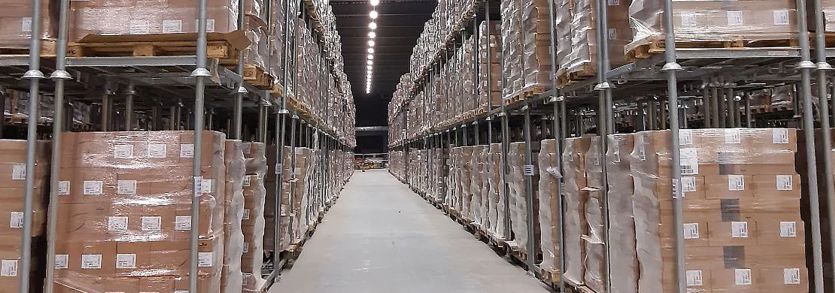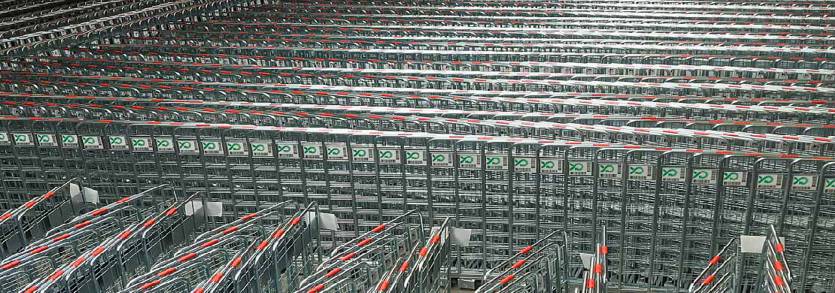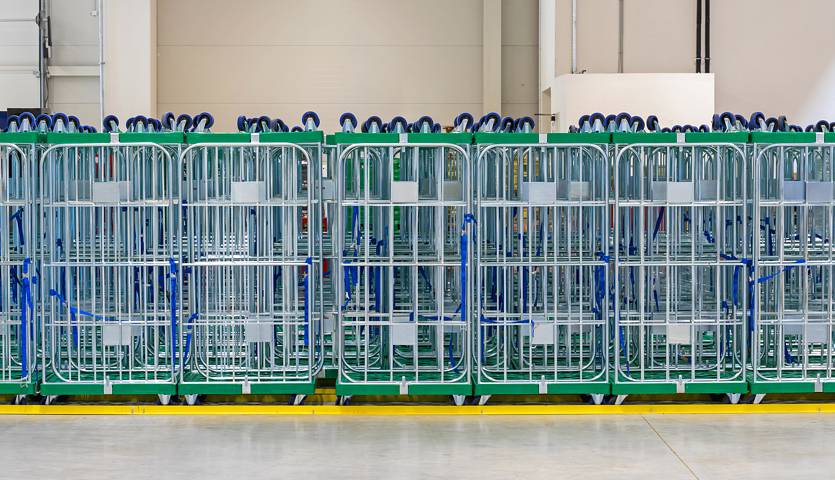Managing warehousing and logistics operations often means constantly balancing the need to optimise costs with maintaining operational liquidity. How do you cope with a reality where each successive quarter can bring unforeseen changes - fluctuations in demand, problems in supply chains, regulatory changes, or seasonal sales peaks?
The traditional infrastructure investment model, including purchasing logistics carriers, often involves freezing significant funds. In the face of uncertainty, many managers gravitate towards flexible services that allow them to respond to dynamic changes such as sudden spikes in demand, supply chain disruptions, or regulatory shifts without incurring long-term commitments. One such solution is the rental of logistics packaging, which can act as quite a facility to help a company maintain operational and financial liquidity.
In recent years, there has been a clear trend of companies increasingly opting to rent fixed assets instead of purchasing them, according to an EFL report carried out in 2022, as many as 42% of commercial companies plan to use car rental in the next three years, a significant increase from the current level of 18%.
Similar trends are evident in other sectors. In manufacturing, for example, forklift rental is predicted to rise to 60% and become the dominant form of financing, replacing the traditional use of credit. This approach allows companies to manage resources flexibly, optimise costs, and adapt quickly to dynamic market changes.
Let's find out if renting logistics packages is a cost-effective solution.
Rental of logistic carriers is a flexible solution
Third-party logistics companies (3Pl) must be flexible, especially those serving multiple customers and responding dynamically to changing market needs. Packaging rental is the answer to today's challenges - it allows companies to adapt quickly and provide the correct number of containers, roll containers or racks when needed most.
For example, warehouses need to handle higher order volumes during peak sales periods such as Black Friday or holidays. Renting containers, pallets, or post-pallets allows for increased storage and operational space without costly infrastructure expansion. At the end of the peak period, redundant packaging can be returned, avoiding storage costs and thus reducing TCO (Total Cost of Ownership).
Is rental cheaper than purchase?
Yes, renting can be a cheaper way to acquire additional resources than buying them. In many logistic carriers rental projects we have undertaken for our customers, the average rental cost has been between 25% and 50% of the purchase price.
At first glance, owning packaging may seem more cost-effective than renting, but it is not so obvious in practice. Let us analyse several factors.
No high start-up costs
Investing in modern reusable packaging entails a significant one-time expenditure. Even large companies may find it challenging to tie up capital in this manner. Renting offers a solution by spreading the cost and ensuring you only pay for what you use, providing a sense of financial security.
Saving on storage
Storing unused packaging generates additional costs. Renting eliminates the problem of storing empty logistics media in the off-season. It is part of the total cost of ownership (TCO), which shows the actual total cost of owning assets in-house.
Avoiding maintenance costs
Maintaining your own packaging in good condition requires regular and often costly servicing. By opting for rental, the company can avoid this worry and focus on its core operations, providing a sense of relief.
Flexibility
You can easily and quickly increase your pool of rented logistics media or extend your rental period. This will keep your supply chain flexible.
Packaging rental in compliance with PPWR and EUDR regulations
By renting packaging, the company also avoids the additional costs associated with new regulations on sustainable packaging management.
One of these is the Packaging and Packaging Waste Regulation (PPWR), adopted by the EP on 24 April 2024. This regulation should contribute to the transition to a closed-loop economy. The PPWR sets a comprehensive framework to prevent packaging waste and promote reuse and recycling. By renting packaging, we use existing logistics carriers to avoid the charges of buying new ones.
The same is true of the EU Deforestation Regulation (EUDR) regulations on deforestation. The regulation's primary objectives are to reduce greenhouse gas emissions and limit the EU's impact on global forest degradation. This regulation requires companies to invest in new technology to more easily identify the source of the timber, which can mean significant costs.
The EUDR also aims to promote a circular economy by encouraging companies to reuse and recover packaging rather than continuously use new resources. Therefore, by using rental pallets or wood extensions that function in a circular economy, we do not incur the additional costs associated with the EUDR regulations and support a sustainable packaging cycle.
Practical examples - how rental of logistic carriers has helped companies
Case study 1: Mobile rack rental for warehouse expansion

A company operating an e-commerce warehouse was planning to expand its infrastructure. To maintain operational fluidity, it rented Mobilrack post pallet racks. It enabled it to increase its storage space and continue operations without problems temporarily. On completion of the expansion, the redundant racks were returned, avoiding additional storage costs.
Full description: Mobilrack rental as the best solution for warehouse expansion
Case study 2: Rental of roll containers as a solution for the retail industry in times of disruption

Dynamic market changes and supply chain disruptions challenged one retail company to maintain efficient logistics. Renting roll containers allowed the company to organise the transport and storage of goods quickly and flexibly, which became crucial during busy periods. As a result, the company avoided costly disruptions and could fulfil orders efficiently.
Full description: Rental of roll containers for the retail industry as a solution for times of disruption
Conclusion - when is it worth choosing to rent?
Renting logistics carriers is often cheaper than purchasing them. It provides flexibility, avoids unnecessary expenses, and makes managing operations in a dynamic logistics environment easier. It is a particularly beneficial option for 3PLs, distributors, and warehouse managers who must respond to seasonal demand increases, infrastructure upgrades, or changing regulations.
The key benefits of renting are:
- Lack of need to invest a large amount of capital at the outset, allowing you to remain creditworthy and free to make investments.
- Ability to adapt the number of packages to actual needs
- Savings on storage and maintenance (TCO)
- Avoidance of costs associated with new regulations
- Rapid delivery of rented media
For many companies, renting is a strategy to maintain financial and operational liquidity in uncertain times. If your company is facing similar challenges, this option is worth considering!
Learn more about the rental process by reading WP: Renting or sharing logistics means.



















